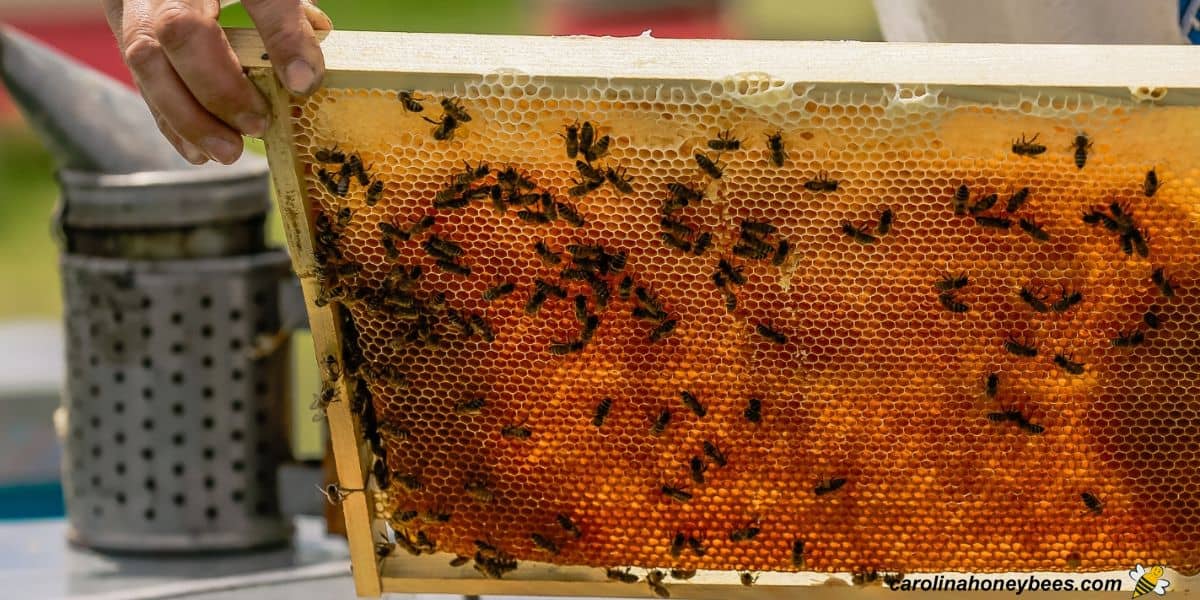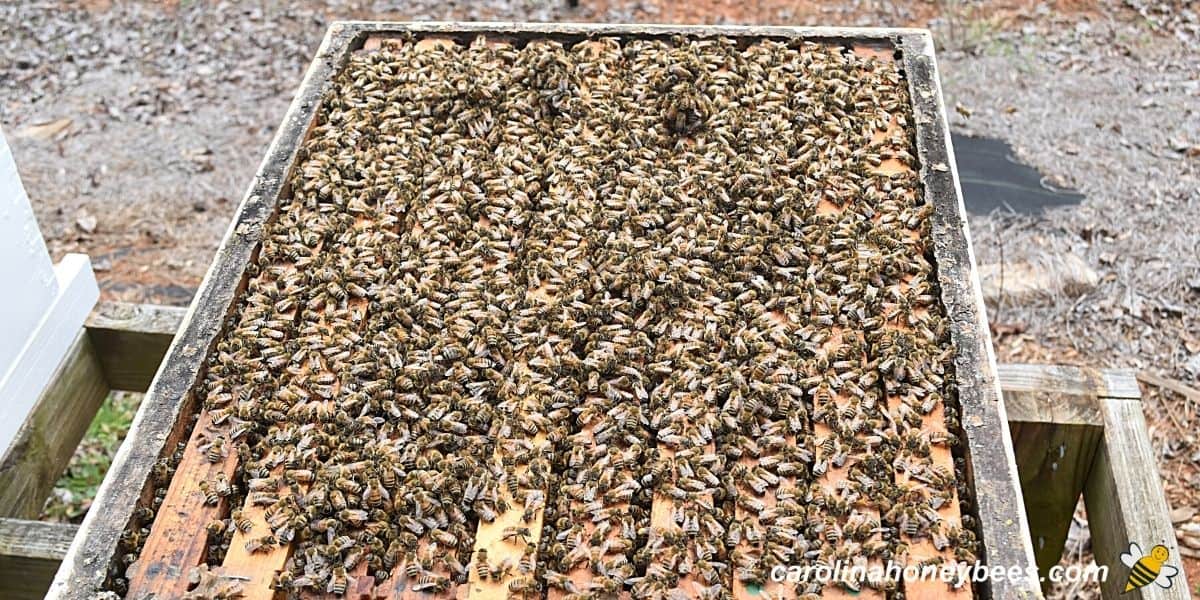How Many Beehives to Start?
Beginning beekeeping is an exciting time – so many new things to learn and do. You have stuff to buy too and some important decisions to make. One common question is – how many beehives should I start with? You will hear a lot of good ideas, some “set in stone” declarations and a few opinions along the way. If you are going to do this beekeeping thing, you want to have enough to make it worthwhile. Yet, it’s no time to get in too far over your head and have a bee disaster.

Truth is, there are some valuable guidelines regarding the perfect number of beehives for a new beekeeper. However, the variables in regards to space, time and money and physical ability all come into play for someone interested in how to start beekeeping.
Choosing the Right Number of Beehives
Spring is a time of awakening for beekeepers of all experience levels. We older beekeepers look forward to colony startup too.
For those of you new to the hobby, there are many decisions to make and things can feel a bit overwhelming. In fact, some of folks become obsessed with the world of the honey bee.
And we focus on everything and anything that has to do with bees – quotes, sayings etc. The more the better right?
One of the first major concerns for new beekeepers is buying bees. These are normally ordered months before they arrive in early Spring. But, before you place your bee order – you need to have an idea of how many beehives you want.

Regardless of the number of hive you start out with, you may catch a wild bee swarm or two. But, you do need to have a starting number in mind -so you can make the necessary plans for your bees.
If I must give you a number for how many beehives a new beekeeper should start with I will say – 2 hives.
This is a popular number thrown out by classes (including my online beekeeping class) and experienced beekeepers and with good reason.
Cost Considerations
We must not overlook the costs related to beekeeping. Most of you will need to acquire bees, and beehive components to start. You may buy equipment or use hive plans and build your own.
New beekeepers need protective clothing and a few other tools (bee smoker, hive tool etc). All of this can easily run into several hundred dollars to several thousand dollars.
While clothing and tools can be used many times – the more colonies you want the more money you will spend on setting up your beehives.

Benefits of Having More Than 1 Beehive
There are some compelling reasons to start out with at least 2 beehives for the new beekeeper. Even with the best efforts, honey bees do not always thrive.
- increased chance of success
- share resources (eggs, brood, bees)
- accelerated learning opportunities
Multiple Hives Increases Your Chance of Success
It doesn’t take a new beekeeper long to learn that beekeeping is not easy. Many experienced beekeepers lose colonies every year.
The first year of beekeeping is an exciting and frustrating time. If you have only 1 colony and it dies, you have zero bees.
That can be especially hard to take after all of your expense and effort. With another hive in place, you are not starting from scratch next season.
Over the years, I have seen many new folks become discouraged and quit -when their one colony died.
Sharing Resources Between Hives
Having more than 1 hive in the bee yard gives the beekeeper more resources to work with when a colony is having difficulty.
In addition to brood frames, young nurse bees themselves can be shared between colonies. Yes, their different bee pheromones may cause some fighting-but a little sugar water spray reduces that.

Why would a colony need resources from another? Even a good hive can have problems. Perhaps the honey bees swarm and is unable to re-queen itself. Or, the beekeeper may kill a queen during a hive inspection.
Brood, workers and even frames of honey or pollen can be shared among hives. This is called equalizing your bee colonies.
It can be a good management tool but don’t swap frames around “willy-nilly”. Have a reason for doing it.
How many hives do you need to allow sharing of resources? At least 2 hives are needed. If you have 3 hives, that will give you even greater freedom to build up weaker hives.
Interestingly, some beekeepers would say that you should let weak colonies die. Sometimes, that may be true. However, I feel that not all weak hives are bad colonies.
A honey bee colony can have bad luck just like the rest of us. Adding some bee brood (young bees) to a struggling colony may be the boost that it needs.
With only 1 colony, how can you evaluate its progress? You have no other hives in the bee yard for comparison. Is the hive growing as it should?
Are the bees in your one hive building new comb at a normal rate? Having 2 colonies provides a chance to compare.
Yet, no matter how many colonies you have, there will always be some individual differences.
However, if one hive is going “gangbusters” and the one sitting next to it is not, we must wonder why. Perhaps, the difference is due to hive genetics or maybe there is a problem.
This is the time to open things up and perform a beehive inspection – see if the queen bee is present and laying. Also to assess the colony, check for a good brood pattern and to look for signs of disease etc.
Making notes of your colony’s progress is important. These notes from your beekeeping journal or notebook offer important learning opportunities from year to year.

Responsible Beekeeping
Your first years are not a time to go “hog wild”. Your investment is better protected if you keep your hive numbers to a manageable number.
Some beekeepers start out being overly optimistic. Perhaps, they want to pursue a bee farm as a business – no harm in that. But, with no beekeeping experience, this could be a recipe for disaster.
It is unfair and irresponsible to have too many beehives for your location or more than you can care for well.
It is much better to begin with a couple of hive this first year. If things go well, 3-4 strong hives can be split into more colonies next Spring.
I once had 26 hive that I managed alone – but I don’t recommend it. And, that was a number I built up to after several years of experience. The best number of hives for your apiary may be different than that of a friend.
FAQs
Yes, you can start beekeeping with only 1 hive. But, to increase your chances of success try to befriend some local beekeepers in your area so you will have some resources to draw on if you need help.
The needs and desires of each beekeeper will differ. How long it takes you to inspect 2 hives versus 1 hive depends in part on your technique. If you like to look at every bee on every frame, it will take you twice as long.
If you are only doing a quick check for problems, the addition of a second hive does not result in a lot more time. A couple of colonies help support each other and allow for twice the learning experience.
Having multiple hives in the bee yard is not likely to cause a lot of problems among the colonies. Though you must be more watchful for honey bee robbing as your hive numbers grow.
Practice good beekeeping management by avoiding spilling sugar water in the bee yard. Don’t throw down chunks of burr comb or other hive debris.
If you feed a colony, feed everyone. It is only during times of a nectar shortage that the beekeeper really needs to be concerned about honey bee robbing behavior.
We are keeping hives much closer together than you would find in nature. However, hives can prosper when placed very close together as long as the beekeeper is consistent with keeping the yard clean and watching for robbing.
A good rule of thumb is 2 feet of clearance space on each side of a hive whenever possible. This reduces the episodes of “drifting” when foragers return to a different hive.
But, the biggest advantage of this spacing is giving the beekeeper room to work on all sides of the hive when needed.
Final Thoughts
I encourage my students to begin with 2 hives that first year. Most new beekeepers should not begin with more than 4 beehives. Trying to manage more than 4 hives without the help of a hands-on mentor is risky. It is much better to spend a year learning and enjoying your honey bee colonies. After successfully over-wintering a colony or two, you will be ready to grow your apiary.

